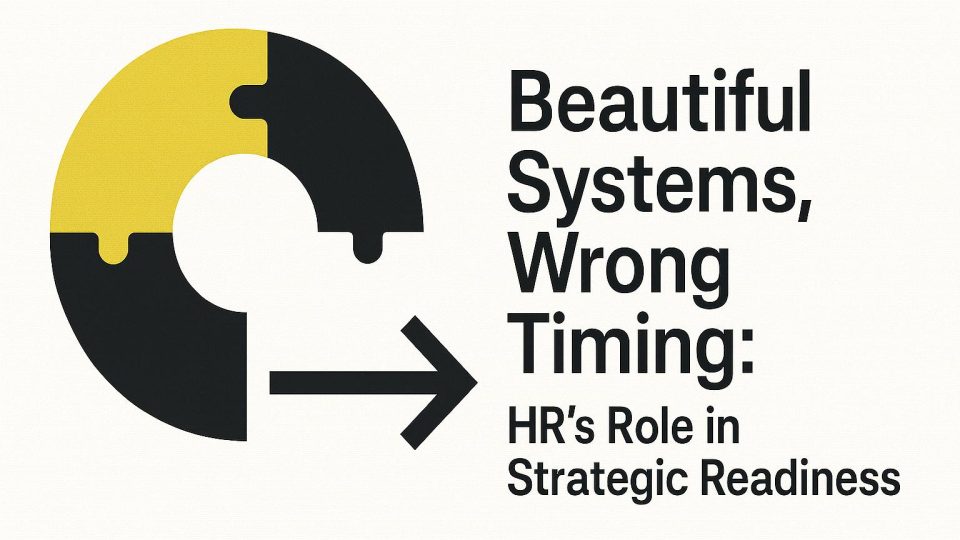HR loves structure. Forms, frameworks, competency models, performance cycles. We build them to create clarity. But what happens when the organization we are building for is in turbulence? Undefined. Divided. Unsure of where it is heading? Very common thing nowadays…
I once observed a company in the middle of a high-speed transformation eager to make a bold move. They decided to implement a formal performance management system. It had all the ingredients – KPIs, SMART goals, review cycles, 1-to-1 feedback. Except for one thing: relevance.

People were unsure of their priorities and even senior leaders were still debating the direction of the business. The path was unclear, since there were different scenarios of development and management was in the process of emotional discussions which one to pick.
The result? Confusion, resistance, and, certainly, wasted effort. Employees were not able to align with goals they did not understand, managers were unsure what to evaluate and the whole system turned into a formal exercise detached from daily reality, circumstances and general direction.

The experience left me with one conclusion. A good HR system, launched at the wrong time, does more harm than good. It confuses people, wastes resources and creates the illusion of progress where there is none.
We need to stop pretending HR can lead the way with systems.
HR should not get ahead of strategy.
But more importantly, HR should not mimic strategy either. It should mirror it with courage and honesty.
Let us stop installing legacy practices in future-facing companies. Let us stop pretending business-as-usual HR fits a business-in-transition.

Here is what aligned HR actually looks like:
- If revenue is bleeding, your job is to drive value, not fill hotel conference rooms with team-building karaoke. High-impact, low-cost wins. Anything else is vanity.
- If the business is expanding globally, your learning programs should not stay local in tone, language or mindset. Global mindset starts inside HR, not outside.
- If innovation is the company’s new bet, then failure needs to be normalized. Job descriptions need rewriting. Curiosity, not compliance needs to be rewarded.
- If speed is the name of the game, HR must move like a product team. Drop the annual reviews. Design micro-feedback loops. Kill the 10-step approval chains.
- If leadership is operating on trial-and-error, do not build formal structures to protect them from it. Build resilience around it. Shape teams that can handle pivots.
The point is this! HR does not just implement tools. It reads the room.

And if the room is on fire, you usually do not hang curtains. You help people find the exits and rebuild the house better.
So before you roll out another program, ask yourself:
- Does this reflect where we actually are or just where we wish we were?
- Am I supporting the real business strategy or just the PowerPoint version of it?
- Is this system solving a problem or avoiding one?
